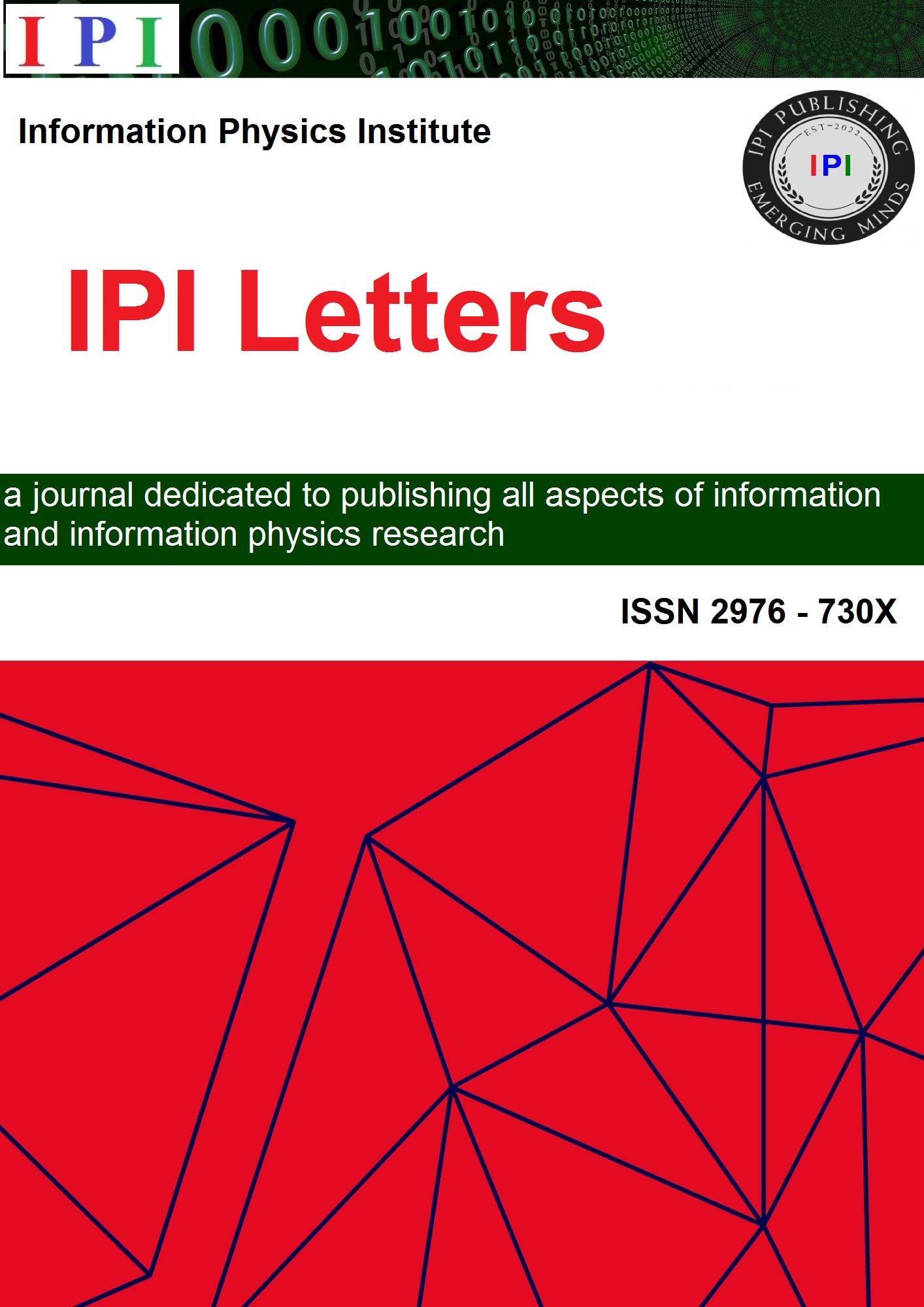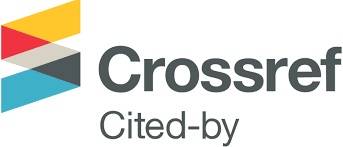Reply to "Various issues around the L1-norm distance"
DOI:
https://doi.org/10.59973/ipil.77Keywords:
Łukaszyk-Karmowski metric, mean absolute difference, identity of indiscerniblesAbstract
A distance function between two random variables or vectors was proposed in 2003 in a Ph.D. dissertation. Initially called a probability metric, it is now known as "Łukaszyk-Karmowski metric" or LK-metric and has been successfully applied in various fields of science and technology. It does not satisfy the identity of indiscernible (Leibniz's law) axiom of the metric, the ontological axiom also invalidated by the ugly duckling theorem. This note addresses two false claims made in a preprint that LK-metric is the same as the mean absolute difference and that it is ill-defined. The fallacy of the first claim is straightforward: the mean absolute difference is defined solely for independent and identically distributed random variables, contrary to LK-metric. Thus, if one considers E|X-X|, then the random variable X must be independent of itself, which implies its degenerate probability distribution and E|X-X|=0. If X has a degenerate probability distribution, then Y, which is identically distributed as X, also has a degenerate probability distribution and E|X-X|=0=E|X-Y|, invalidating the second claim.
References
S. Lukaszyk, Probability Metric, examples of approximation applications in experimental mechanics. PhD thesis, Cracow University of Technology, 2003.
S. Lukaszyk, “A new concept of probability metric and its applications in approximation of scattered data sets,” Computational Mechanics, vol. 33, pp. 299–304, Mar. 2004.
J.-D. Rolle, “Various issues around the L1-norm distance,” 2021.
A. Banerjee, C. J. Hazard, J. Beel, C. Mack, J. Xia, M. Resnick, and W. Goddin, “Surprisal Driven k-NN for Robust and Interpretable Nonparametric Learning,” 2023.
J. C. Davidson and S. A. Hutchinson, “A Sampling Hyperbelief Optimization Technique for Stochastic Systems,” in Algorithmic Foundation of Robotics VIII (B. Siciliano, O. Khatib, F. Groen, G. S. Chirikjian,H. Choset, M. Morales, and T. Murphey, eds.), vol. 57, pp. 217–231, Berlin, Heidelberg: Springer Berlin Heidelberg, 2009.
G. Meng, J. Law, and M. E. Thompson, “Small-scale health-related indicator acquisition using secondary data spatial interpolation,” International Journal of Health Geographics, vol. 9, no. 1, p. 50, 2010.
G. Meng, Social and Spatial Determinants of Adverse Birth Outcome Inequalities in Socially Advanced Societies. Doctoral Thesis, University of Waterloo, Oct. 2010.
Y. Xia, X. Shi, L. Kuang, and J. Xuan, “Parallel geospatial analysis on windows hpc platform,” in 2010 The 2nd Conference on Environmental Science and Information Application Technology, vol. 1, pp. 210–213, IEEE, 2010.
D. Batra, On graph-structured discrete labeling problems in computer vision: Learning, inference and applications. PhD thesis, Carnegie Mellon University, 2010.
V. R. Joseph and L. Kang, “Regression-Based Inverse DistanceWeightingWith Applications to Computer Experiments,” Technometrics, vol. 53, pp. 254–265, Aug. 2011.
J. Davidson, Exploiting insensitivity in stochastic systems to learn approximately optimal policies. PhD thesis, University of Illinois at Urbana-Champaign, Sept. 2012.
F. Xu, G. Sun, G. Li, and Q. Li, “Crashworthiness design of multi-component tailor-welded blank (TWB) structures,” Structural and Multidisciplinary Optimization, vol. 48, pp. 653–667, Sept. 2013.
C. Jun, S. Bhattacharya, and R. Ghrist, “Pursuit-evasion game for normal distributions,” in 2014 IEEE/RSJ International Conference on Intelligent Robots and Systems, (Chicago, IL, USA), pp. 83–88, IEEE, Sept.2014.
V. Bagheri, M. S. Jahromi, A. Keshavarz, and H. Rostami, “Time-frequency signal processing based on fractional fourier transform in passive sonar classification,” Int. J. Electron. Commun. Comput. Eng, vol. 5,no. 6, pp. 1366–1370, 2014.
A. B¨ucken, Automatische Modellierung von Waldlandschaften f¨ur virtuelle Welten und mobile Roboter. Wiesbaden: Springer Fachmedien Wiesbaden, 2014.
R. Betti, “Combining Model Based and Data Based Techniques in a Robust Bridge Health Monitoring Algorithm,” Tech. Rep. CAIT-UTC-015, Columbia University. Department of Civil Engineering and Engineering Mechanics, Sept. 2014.
S. Pedersen, C. Mai, L. Hansen, P. Durdevic, and Z. Yang, “Online Slug Detection in Multi-phase Transportation Pipelines Using Electrical Tomography,” IFAC-PapersOnLine, vol. 48, no. 6, pp. 159–164, 2015.
B. Brutovsky and D. Horvath, “Towards inverse modeling of intratumor heterogeneity,” Open Physics, vol. 13, Aug. 2015.
P. Durdevic, L. Hansen, C. Mai, S. Pedersen, and Z. Yang, “Cost-Effective ERT Technique for Oilin-Water Measurement for Offshore Hydrocyclone Installations,” IFAC-PapersOnLine, vol. 48, no. 6,pp. 147–153, 2015.
S. M. Hosseini and S. Smaeili, “Numerical integration of multi-dimensional highly oscillatory integrals, based on eRPIM,” Numerical Algorithms, vol. 68, pp. 423–442, Feb. 2015.
A. Wang, Z. Jin, C. Song, and W. Xu, “Adaptive compressed sensing architecture in wireless braincomputer interface,” in Proceedings of the 52nd Annual Design Automation Conference, (San Francisco California), pp. 1–6, ACM, June 2015.
Balsamo, Luciana, Mukhopadhyay, Suparno, and Betti, Raimondo, “A statistical framework with stiffness proportional damage sensitive features for structural health monitoring,” Smart Structures and Systems, vol. 15, pp. 699–715, Mar. 2015.
J. K. Mwangi, “The Impact of Rice Blast Disease, its Mapping and Suitability Analysis for Rice Growing Sites in the Greater Mwea Region,” Master’s thesis, Jomo Kenyatta University of Agriculture and Technology, Feb. 2015.
B. Han, X. Gao, H. Liu, and P. Wang, “Auroral Oval Boundary Modeling Based on Deep Learning Method,” in Intelligence Science and Big Data Engineering. Big Data and Machine Learning Techniques
(X. He, X. Gao, Y. Zhang, Z.-H. Zhou, Z.-Y. Liu, B. Fu, F. Hu, and Z. Zhang, eds.), vol. 9243, pp. 96–106, Cham: Springer International Publishing, 2015.
J. Park, V. Sreeja, M. Aquino, C. Cesaroni, L. Spogli, A. Dodson, and G. De Franceschi, “Performance of ionospheric maps in support of long baseline GNSS kinematic positioning at low latitudes,” Radio Science, vol. 51, pp. 429–442, May 2016.
G. Lenda, M. Ligas, P. Lewi´nska, and A. Szafarczyk, “The use of surface interpolation methods for landslides monitoring,” KSCE Journal of Civil Engineering, vol. 20, pp. 188–196, Jan. 2016.
You, Hojun and Kim, Dongsu, “Development of an anisotropic spatial interpolation method for velocity in meandering river channel,” Journal of Korea Water Resources Association, vol. 50, pp. 455–465, July 2017.
J. Koloda, J. Seiler, and A. Kaup, “Frequency-Selective Mesh-to-Grid Resampling for Image Communication,”IEEE Transactions on Multimedia, vol. 19, pp. 1689–1701, Aug. 2017.
A. M. Abd and S. M. Abd, “Modelling the strength of lightweight foamed concrete using support vector machine (SVM),” Case Studies in Construction Materials, vol. 6, pp. 8–15, June 2017.
P. Kasparaitis and K. Kan?cys, “Phoneme vs. Diphone in Unit Selection TTS of Lithuanian,” Baltic Journal of Modern Computing, vol. 6, no. 2, 2018.
I. B. O¨ zdemir, “A modification to temperature-composition pdf method and its application to the simulation of a transitional bluff-body flame,” Computers & Mathematics with Applications, vol. 75, pp. 2574–2592, Apr. 2018.
J. Vicent, J. Verrelst, J. P. Rivera-Caicedo, N. Sabater, J. Munoz-Mari, G. Camps-Valls, and J. Moreno,“Emulation as an Accurate Alternative to Interpolation in Sampling Radiative Transfer Codes,” IEEE
Journal of Selected Topics in Applied Earth Observations and Remote Sensing, vol. 11, pp. 4918–4931, Dec. 2018.
M. J. Lake, M. Miller, R. F. Ganardi, Z. Liu, S.-D. Liang, and T. Paterek, “Generalised uncertainty relations from superpositions of geometries,” Aug. 2019. arXiv:1812.10045 [gr-qc, physics:hep-th, physics:quant-ph].
A. Sofianopoulos, M. Rahimi Boldaji, B. Lawler, and S. Mamalis, “Investigation of thermal stratification in premixed homogeneous charge compression ignition engines: A Large Eddy Simulation study,”International Journal of Engine Research, vol. 20, pp. 931–944, Oct. 2019.
D. J. Tan, D. Honnery, A. Kalyan, V. Gryazev, S. A. Karabasov, and D. Edgington-Mitchell, “Equivalent Shock-Associated Noise Source Reconstruction of Screeching Underexpanded Unheated Round Jets,”AIAA Journal, vol. 57, pp. 1200–1214, Mar. 2019.
C. Anagnostopoulos, “Edge-centric inferential modeling & analytics,” Journal of Network and Computer Applications, vol. 164, p. 102696, Aug. 2020.
X. Chen, Q. Zhao, F. Huang, R. Qiu, Y. Lin, L. Zhang, and X. Hu, “Understanding spatial variation in the driving pattern of carbon dioxide emissions from taxi sector in great Eastern China: evidence from an analysis of geographically weighted regression,” Clean Technologies and Environmental Policy, vol. 22, pp. 979–991, May 2020.
H. Gong, Y. Yu, Q. Li, and C. Quan, “An inverse-distance-based fitting term for 3D-Var data assimilation in nuclear core simulation,” Annals of Nuclear Energy, vol. 141, p. 107346, June 2020.
L. Xu, X. Zeng, H. Zhang, W. Li, J. Lei, and Z. Huang, “BPGAN: Bidirectional CT-to-MRI prediction using multi-generative multi-adversarial nets with spectral normalization and localization,” Neural Networks, vol. 128, pp. 82–96, Aug. 2020.
Z. Li, X. Zhang, R. Zhu, Z. Zhang, and Z.Weng, “Integrating data-to-data correlation into inverse distance weighting,” Computational Geosciences, vol. 24, pp. 203–216, Feb. 2020.
W. Wei, Z. Guo, L. Zhou, B. Xie, and J. Zhou, “Assessing environmental interference in northern China using a spatial distance model: From the perspective of geographic detection,” Science of The Total Environment, vol. 709, p. 136170, Mar. 2020.
Y. Han, B. Han, Z. Hu, X. Gao, L. Zhang, H. Yang, and B. Li, “Prediction and variation of the auroral oval boundary based on a deep learning model and space physical parameters,” Nonlinear Processes in Geophysics, vol. 27, pp. 11–22, Feb. 2020.
Y. Lin, X. Hu, M. Lin, R. Qiu, J. Lin, and B. Li, “Spatial Paradigms in Road Networks and Their Delimitation of Urban Boundaries Based on KDE,” ISPRS International Journal of Geo-Information, vol. 9, p. 204, Mar. 2020.
A. Sofianopoulos, M. Rahimi Boldaji, B. Lawler, S. Mamalis, and J. E. Dec, “Effect of engine size, speed, and dilution method on thermal stratification of premixed homogeneous charge compression–ignition engines: A large eddy simulation study,” International Journal of Engine Research, vol. 21, pp. 1612–1630, Nov. 2020.
P. Pergantas, N. E. Papanikolaou, C. Malesios, A. Tsatsaris, M. Kondakis, I. Perganta, Y. Tselentis, and N. Demiris, “Towards a Semi-Automatic EarlyWarning System for Vector-Borne Diseases,” International Journal of Environmental Research and Public Health, vol. 18, p. 1823, Feb. 2021.
M. Akhtar, Y. Zhao, and G. Gao, “An analytical approach for assessment of geographical variation in ecosystem service intensity in Punjab, Pakistan,” Environmental Science and Pollution Research, vol. 28, pp. 38145–38158, July 2021.
Z. Hu, B. Han, Y. Zhang, H. Lian, P.Wang, G. Li, B. Li, X. Chen, and J. Liu, “Modeling of Ultraviolet Aurora Intensity Associated With Interplanetary and Geomagnetic Parameters Based on Neural Networks,”Space Weather, vol. 19, p. e2021SW002751, Nov. 2021.
Z. Li, “An enhanced dual IDW method for high-quality geospatial interpolation,” Scientific Reports, vol. 11, p. 9903, May 2021.
B.-M. Negrea, V. Stoilov-Linu, C.-E. Pop, G. De´ak, N. Cr?aciun, and M. M. F?ag?aras, , “Expansion of the Invasive Plant Species Reynoutria japonica Houtt in the Upper Bistrit,a Mountain River Basin with a Calculus on the Productive Potential of a Mountain Meadow,” Sustainability, vol. 14, p. 5737, May 2022.
F. Saggese, V. Lottici, and F. Giannetti, “Rainfall Map from Attenuation Data Fusion of Satellite Broadcast and Commercial Microwave Links,” Sensors, vol. 22, p. 7019, Sept. 2022.
Z. Han, J. Xiao, and Y.Wei, “Spatial Distribution Characteristics of Microbial Mineralization in Saturated Sand Centrifuge Shaking Table Test,” Materials, vol. 15, p. 6102, Sept. 2022.
O. A. Akintunde, C. V. Ozebo, and K. F. Oyedele, “Groundwater Quality around upstream and downstream area of the Lagos lagoon using GIS and Multispectral Analysis,” Scientific African, vol. 16, p. e01126, July 2022.
K. C. B. Benedetti, P. B. Gonc¸alves, S. Lenci, and G. Rega, “Global analysis of stochastic and parametric uncertainty in nonlinear dynamical systems: adaptative phase-space discretization strategy, with application to Helmholtz oscillator,” Nonlinear Dynamics, vol. 111, pp. 15675–15703, Sept. 2023.
A. El-Atik, Y. Tashkandy, S. Jafari, A. Nasef,W. Emam, and M. Badr, “Mutation of dna and rna sequences through the application of topological spaces,” AIMS Mathematics, vol. 8, no. 8, pp. 19275–19296, 2023.
M. Mousavi Karimi, “Expanding one-dimensional game theory-based group decision models: Extension to n-dimension and integration of distributed position function,” Theses and Dissertations, Aug. 2023.
D. Hern´andez-L´opez, E. R. D. O˜na, M. A. Moreno, and D. Gonz´alez-Aguilera, “SunMap: Towards Unattended Maintenance of Photovoltaic Plants Using Drone Photogrammetry,” Drones, vol. 7, p. 129, Feb.2023.
M. Hardy, “Independence of a random variable from itself.” https://math.stackexchange.com/questions/512755/independence-of-a-random-variable-x-from-itself, 2013. Accessed: 2024-05-07.
C? . Brukner, “A No-Go Theorem for Observer-Independent Facts,” Entropy, vol. 20, no. 5, 2018.
S. Lukaszyk, “Life as the explanation of the measurement problem,” Journal of Physics: Conference Series, vol. 2701, p. 012124, Feb 2024.
Y.-L. Zou, F.-L. Hu, C.-C. Zhou, C.-L. Li, and K.-J. Dunn, “Analysis of radial basis function interpolation approach,” Applied Geophysics, vol. 10, pp. 397–410, Dec. 2013.
M. Gentile, F. Courbin, and G. Meylan, “Interpolating point spread function anisotropy,” Astronomy & Astrophysics, vol. 549, p. A1, Jan. 2013.
L. Kang, Computer and physical experiments: design, modeling, and multivariate interpolation. PhD thesis, H. Milton Stewart School of Industrial and Systems Engineering, June 2010.
R. Ngom, Spatial and Statistical Prediction of Urban Malaria in Yaound´e: A Social and Environmental Modelling Approach for Health Promotion. PhD thesis, P¨adagogischen Hochschule Heidelberg, 2010.
F. Angiulli and F. Fassetti, “Nearest Neighbor-Based Classification of Uncertain Data,” ACM Transactions on Knowledge Discovery from Data, vol. 7, pp. 1–35, Mar. 2013.
C. J. Hazard, C. Fusting, M. Resnick, M. Auerbach, M. Meehan, and V. Korobov, “Natively Interpretable Machine Learning and Artificial Intelligence: Preliminary Results and Future Directions,” 2019.
F. Angiulli and F. Fassetti, “Indexing Uncertain Data in General Metric Spaces,” IEEE Transactions on Knowledge and Data Engineering, vol. 24, pp. 1640–1657, Sept. 2012.
J. Chen, Advanced topics in deep reinforcement learning and its applications. PhD thesis, Nanyang Technological University, 2022.
J. Chen and S. Pan, “Learning representations via a robust behavioral metric for deep reinforcement learning,” in Advances in Neural Information Processing Systems (S. Koyejo, S. Mohamed, A. Agarwal, D. Belgrave, K. Cho, and A. Oh, eds.), vol. 35, pp. 36654–36666, Curran Associates, Inc., 2022.
S. G. Matthews, “Partial Metric Topology,” Annals of the New York Academy of Sciences, vol. 728, pp. 183–197, Nov. 1994.
P. S. Castro, T. Kastner, P. Panangaden, and M. Rowland, “A Kernel Perspective on Behavioural Metrics for Markov Decision Processes,” Transactions on Machine Learning Research, Dec. 2022.
T. Sullivan, Introduction to Uncertainty Quantification, vol. 63 of Texts in Applied Mathematics. Cham: Springer International Publishing, 2015.
N. Minculete, A. Ratiu, and J. Pecaric, “A Refinement of Gr¨uss Inequality via Cauchy-Schwarz’s Inequality for Discrete Random Variables,” Applied Mathematics & Information Sciences, vol. 9, pp. 39–45, Jan.2015.
X. Pan, M. Zhang, and D. Ding, “Theoretical analysis of image-to-image translation with adversarial learning,” in International Conference on Machine Learning, pp. 4006–4015, PMLR, 2018.
L. Pronzato, H. P. Wynn, and A. Zhigljavsky, “Bregman divergences based on optimal design criteria and simplicial measures of dispersion,” Statistical Papers, vol. 60, pp. 545–564, Apr. 2019.
X. Pan, M. Zhang, D. Ding, and M. Yang, “A Geometrical Perspective on Image Style Transfer with Adversarial Learning,” IEEE Transactions on Pattern Analysis and Machine Intelligence, pp. 1–1, 2020.
P. S. Castro, T. Kastner, P. Panangaden, and M. Rowland, “MICo: Improved representations via samplingbased state similarity for Markov decision processes,” Advances in Neural Information Processing Systems, vol. 34, pp. 30113–30126, 2021.
M. Mio, R. Sarkis, and V. Vignudelli, “Beyond Nonexpansive Operations in Quantitative Algebraic Reasoning,”in Proceedings of the 37th Annual ACM/IEEE Symposium on Logic in Computer Science, (Haifa Israel), pp. 1–13, ACM, Aug. 2022.
M. Kemertas and A. D. Jepson, “Approximate Policy Iteration with Bisimulation Metrics,” Transactions on Machine Learning Research, 2022.
T. Kastner, “State similarity metrics in reinforcement learning,” Master’s thesis, McGill University (Canada), 2022.
S. Watanabe, Knowing and Guessing: A Quantitative Study of Inference and Information. Quantitative Study of Inference and Information, Wiley, January 1969.
S. Watanabe, “Epistemological Relativity,” Annals of the Japan Association for Philosophy of Science, vol. 7, no. 1, pp. 1–14, 1986.

Downloads
Published
Versions
- 2024-06-08 (4)
- 2024-06-07 (3)
- 2024-05-19 (2)
- 2024-05-18 (1)
How to Cite
Issue
Section
License
Copyright (c) 2024 Andrzej Tomski, Szymon Łukaszyk

This work is licensed under a Creative Commons Attribution 4.0 International License.














